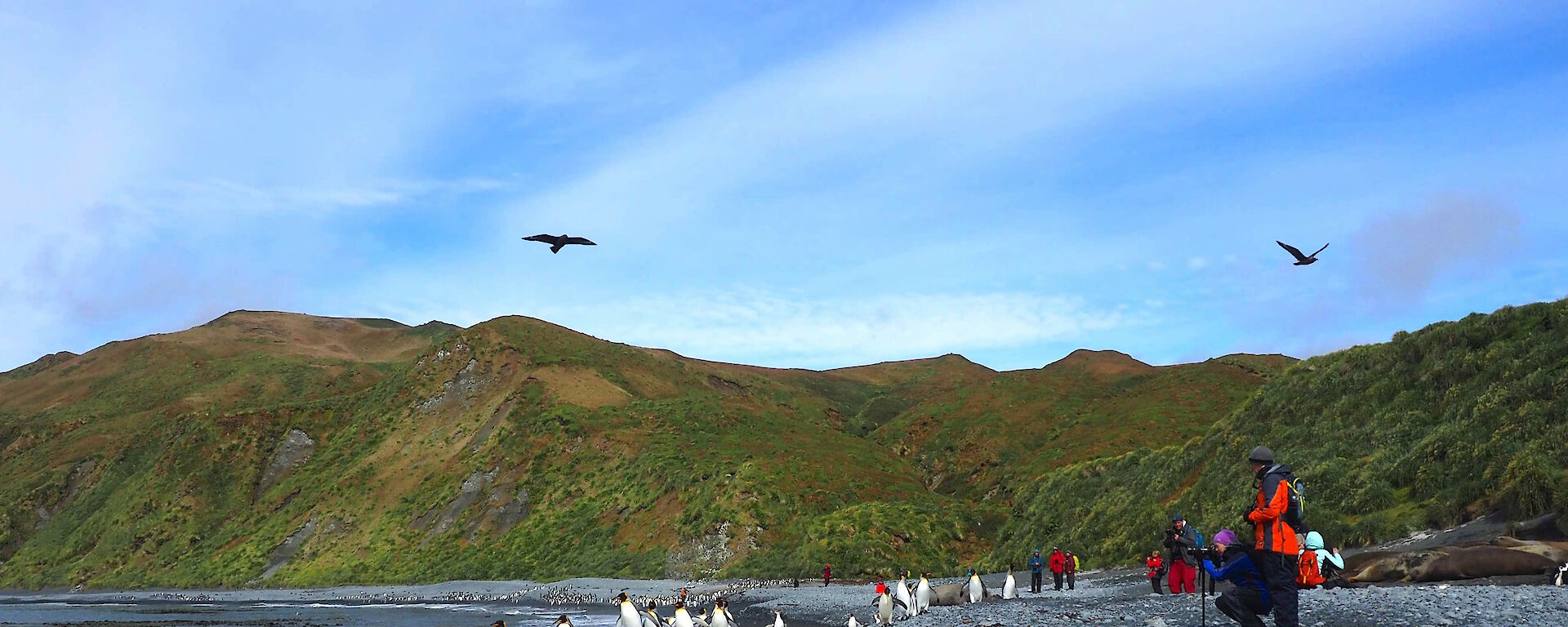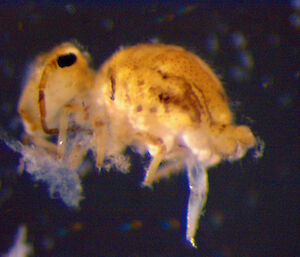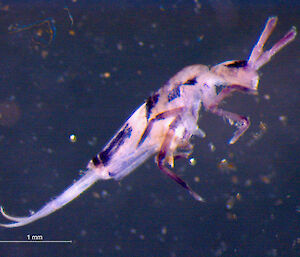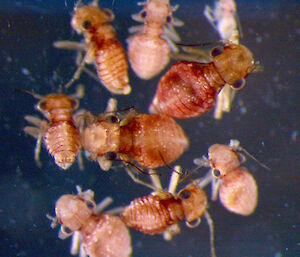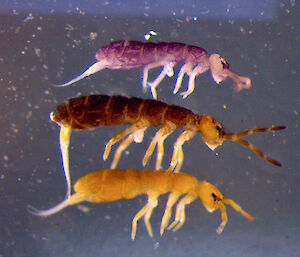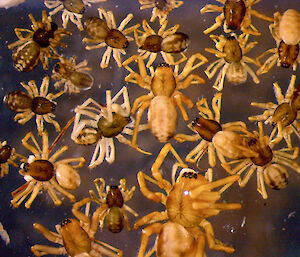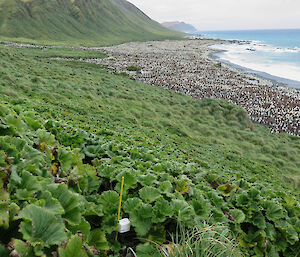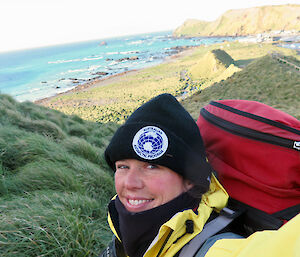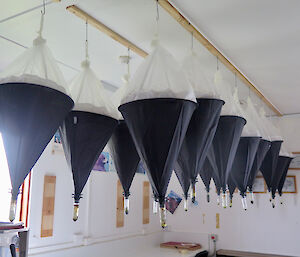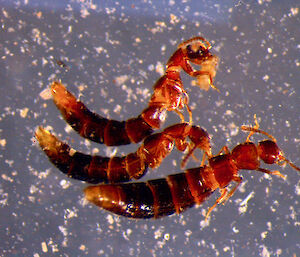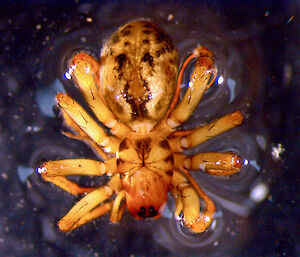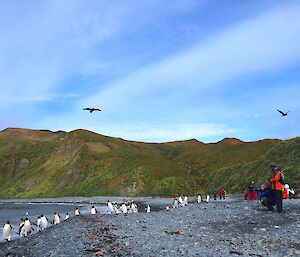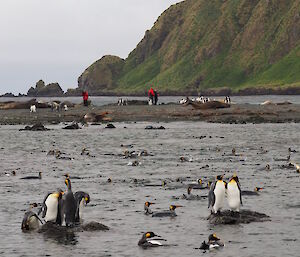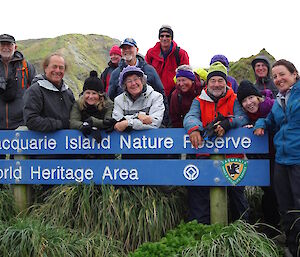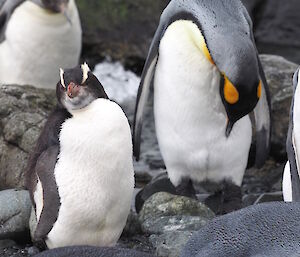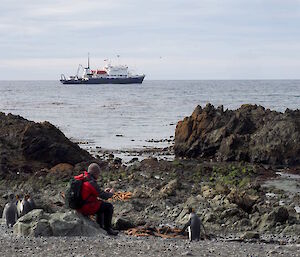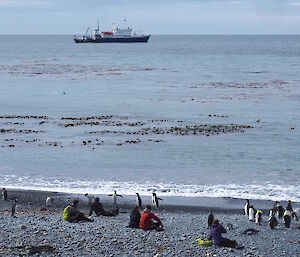A question I am asked, with frightening frequency, is ‘what is an invertebrate?’ and this is often followed by guesses of fish or bird species! The initial question is interesting in itself coming from a mammal, whom merely make up around 5000 species on Earth, whereas the invertebrates (animals without an internal skeleton) make up well over a million species. We are greatly out-numbered by an outstandingly diverse and wonderful world of creatures without a spine. The more I learn, the more I find myself passionately championing the beauty and value of invertebrates with fervour, against the common misconceptions that they are ugly and unimportant. Invertebrates are not only intricate and beautiful, but critical to the functioning of the Earth’s ecosystems through, for example, their pollination and nutrient cycling services. Without them, it is often theorised, the world would not last a week before collapse.
Invertebrates thus are also vital to the functioning of the Macquarie Island ecosystem. There are around 300 native species of invertebrates on the island, and a further 55 or so non-native species of varying status. Invertebrates include a wingless parasitic wasp, thrips, booklice, springtails, spiders, snails, worms, slugs, flies, beetles, aphids and mites and more. We are assessing their response to fluctuations of non-native mammals on the island.
In 2014, the ambitious Macquarie Island Pest Eradication Project was declared successful, ridding the island of rabbits, rats and mice. Already, expeditioners and tourists can see the island’s vegetation rebounding. However, exactly what we expect to see, or how we can best measure the ecosystem’s recovery remains largely unknown. Justine Shaw from the University of Queensland (UQ) with support from the Australian Antarctic Program is leading a large project assessing post-eradication ecosystem recovery on Macquarie Island. The project’s PhD students are all currently on the island, with a focus on burrowing seabirds (Jez Bird — UQ), predatory skuas (Toby Travers — IMAS) and invertebrates (myself — UQ). Each of these PhD projects will shed light on important aspects of the Macquarie Island ecosystem, and importantly, provide unparalleled insights into how the ecosystem is changing after the eradication of rabbits and rodents.
This summer is the third consecutive and final season I will carry out island-wide invertebrate monitoring, to answer some of our questions around ecosystem response to eradication. Beginning in 2015, I re-established 10 historical invertebrate monitoring sites, and a further 14 sites were established in the southern half of the island. Sites were selected on the basis of aspect and vegetation type. Five different vegetation communities are sampled — feldmark (plateau), lower coastal slopes dominated by Stilbocarpa polaris (Macquarie Island cabbage), tall grassland dominated by Poa foliosa tussock, short grasslands and herbfield dominated with Pleurophyllum hookerii. At each site I set an i-button temperature gauge that will give an indication of site micro-climate. I sample different groups of invertebrates using a variety of trapping methods, including pit fall traps, sweep netting of the vegetation tops, extracting litter using Berlese funnels (see photo of udder-looking device), yellow-pan traps, vegetation beating, and 20 minute counts. I also collect soil cores and carry out a vegetation survey at each site.
Once collected, all samples are identified by myself in Australia. It’s a long process, 115,000 individuals identified from the first year’s samples alone — so results are yet to be finalised. However, it does appear that some non-native species have increased their distribution and spiders and moths (preyed upon by rodents) have increased in range and abundance. Certainly, there is a marked increase in spiders festooning the cold porches of the huts and keeping us company in the shower!
It is through the study of Macquarie Island invertebrates that I have become enamoured with the world of the small. When you see some of their microscope photos I have attached, I hope you will agree they are beautiful and worthy of our regard. It will be fascinating to see the results of this project and watch the Macquarie ecosystem keep evolving.
By Melissa Houghton (Research Student — Post eradication ecosystem response on Macquarie Island).

